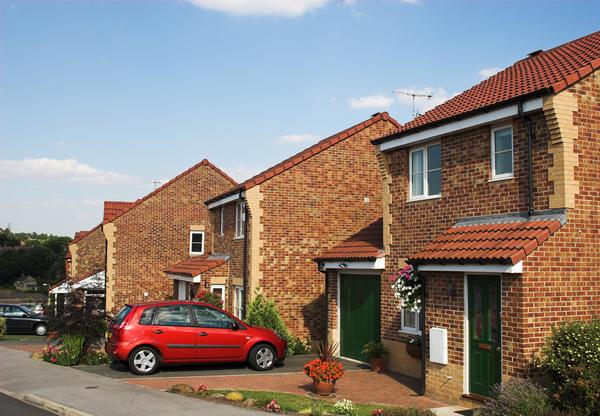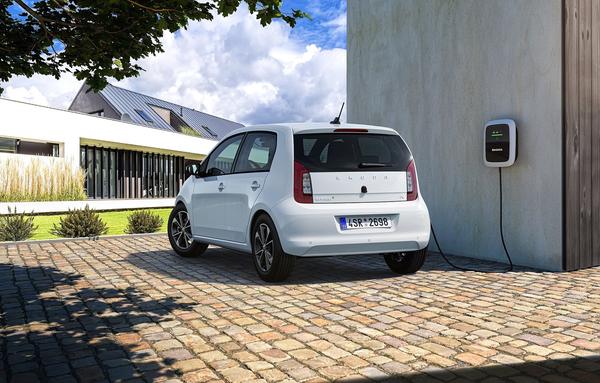Advice
Storing a car: how to lay up a vehicle, and bring it out of storage
Is your car going to be out of use for any extended period of time? Here’s what you need to do.


Words by: Andrew Woodhouse
Last updated on 20 August 2021 | 0 min read
Many cars have been parked up over the last year. As lockdown restrictions lift, it's important to check your vehicle is roadworthy and working properly.
Before you plan any major journeys, please check local guidance and any lockdown restrictions for England, Scotland, Wales and Northern Ireland.
Before you plan any major journeys, please check local guidance and any lockdown restrictions for England, Scotland, Wales and Northern Ireland.
Getting back behind the wheel
If your car has been out of action during lockdown, then here's what to do when you drive for the first time in a while.
Make sure your car tax, insurance and MOT are up to date
Mandatory MOTs resumed from 1st August 2020, and all cars should have a full MOT. Remember, it's illegal to drive without an MOT.
If you're driving to a testing centre with an expired MOT and are stopped by the police, you’ll need to show proof of your appointment. If your vehicle is judged to be dangerous, you may still face a penalty. You can’t tax your car unless you have a valid MOT certificate, so you’ll need to arrange this too. It is illegal to drive an untaxed vehicle. It’s also illegal to drive an uninsured car. The minimum cover required by law is third party, though you should compare quotes and coverage to find the insurance that best suits your needs.
If you're driving to a testing centre with an expired MOT and are stopped by the police, you’ll need to show proof of your appointment. If your vehicle is judged to be dangerous, you may still face a penalty. You can’t tax your car unless you have a valid MOT certificate, so you’ll need to arrange this too. It is illegal to drive an untaxed vehicle. It’s also illegal to drive an uninsured car. The minimum cover required by law is third party, though you should compare quotes and coverage to find the insurance that best suits your needs.
Check tyre pressure and tread depth
You can find the recommended PSI (pounds per square inch) figure in your manual or online. The tread depth should be 1.6 mm for cars and 1 mm for motorbikes, but your handbook will give you the exact number.
Check the vehicle’s health
• Check under the bonnet for signs of rust or damage, and make sure nothing’s nesting there (also check pipes and hoses for signs of chewing).
• Check all fluid levels before you start the engine. • Gently check your brakes (and handbrake) for corrosion. If the handbrake was left on, it may have seized up. • Remember to perform vehicle safety checks before you set off. Test whether your lights and brakes work every time you get in the car, and make sure your windscreen, windows and mirrors are clean before you set off. • When you set off, put your car in gear and drive slowly, paying close attention for any strange noises or jolts. • If your car has been stood for a while, it may be worth booking in a full service as and when garages are open and you’re back on the road.
• Check all fluid levels before you start the engine. • Gently check your brakes (and handbrake) for corrosion. If the handbrake was left on, it may have seized up. • Remember to perform vehicle safety checks before you set off. Test whether your lights and brakes work every time you get in the car, and make sure your windscreen, windows and mirrors are clean before you set off. • When you set off, put your car in gear and drive slowly, paying close attention for any strange noises or jolts. • If your car has been stood for a while, it may be worth booking in a full service as and when garages are open and you’re back on the road.
Perform your vehicle maintenance checks
To ensure your car is working properly, please follow this checklist. You should check the Highway Code for more.
Checklist: • Test lights, brakes, steering, seat belts, demisters, wiper, washer and the exhaust system before you set off • Clean lights, indicators, reflectors and number plates • Clear windscreens and windows for an unobstructed view • Lights are properly adjusted to avoid dazzling other road users • Luggage is securely stowed • Adjust seat, seat belts, head restraints and mirrors before you set off • Exhaust emissions cannot exceed prescribed levels, especially if your vehicle is heavily loaded. If it’s been a while since you last drove and you’re feeling a little nervous, check out our guide to remembering how to drive
Checklist: • Test lights, brakes, steering, seat belts, demisters, wiper, washer and the exhaust system before you set off • Clean lights, indicators, reflectors and number plates • Clear windscreens and windows for an unobstructed view • Lights are properly adjusted to avoid dazzling other road users • Luggage is securely stowed • Adjust seat, seat belts, head restraints and mirrors before you set off • Exhaust emissions cannot exceed prescribed levels, especially if your vehicle is heavily loaded. If it’s been a while since you last drove and you’re feeling a little nervous, check out our guide to remembering how to drive

How to lay-up and maintain a vehicle not in use
If your vehicle is likely to be sat for any more than a few weeks, then there are some steps you should take to store it properly. In this article, we look at how to lay-up and maintain your car while it's not in use.
Top up with fuel if possible
A full tank doesn’t cause as much condensation, which can cause issues if left to build up. It also means you’re ready to go if you do have to travel.
Occasionally release your parking brake
Leaving your parking brake on for too long could cause your brakes to seize up, so we recommend you periodically release the brake and move your car a short distance (ideally while running the engine to charge the battery).
Keep the battery charged
How long a battery holds its charge depends on the age of the battery, how often you drive and other factors like the climate. Things like the alarm system and onboard computers can drain the battery even when your car is parked, so it’s worth keeping it topped up as much as possible.
• If you have a garage, you should consider a smart charger — which can be left plugged in and will draw current when required. • Alternatively, you could consider buying a trickle charger to regularly top the battery up. You may need to leave it all day or overnight. • If you don’t have any of these options, for example because you park on the street, you should just start the engine once a week and run the car for around 15 minutes. This will help re-charge the battery properly and keep the engine in good condition too. In each of these instances, don’t leave the engine idling, and do not leave the engine running without being in the car.
• If you have a garage, you should consider a smart charger — which can be left plugged in and will draw current when required. • Alternatively, you could consider buying a trickle charger to regularly top the battery up. You may need to leave it all day or overnight. • If you don’t have any of these options, for example because you park on the street, you should just start the engine once a week and run the car for around 15 minutes. This will help re-charge the battery properly and keep the engine in good condition too. In each of these instances, don’t leave the engine idling, and do not leave the engine running without being in the car.
Mind the diesel particulate filter
The diesel particulate filter has been fitted to all diesel cars since 2009 and is designed to stop soot leaking into the atmosphere and make the car eco-friendlier.
Soot caught in the filter is normally burned off when the filter regenerates. In ideal circumstances, a longer drive at a sustained speed is needed to do this. What to do To minimise the need for a ‘forced regeneration’ to clear the filter, or the installation of a new one, you should run the car for at least 15 minutes while the filter regenerates. Avoid turning the engine off mid-way through a regeneration as this will cause it to stop and could create further issues. There should be a change in the engine note, an increase in idling speed or a hot smell from the exhaust when the process starts. You may also notice the fans kick in. When to do it If it’s possible to do this regularly and keep a healthy social distance, try to do so. You’ll normally know if the filter needs a regeneration as there’ll be a warning sign on the dashboard. Other signs are that the car goes limp, performance is affected and/or the exhaust emits a strong smell.
Soot caught in the filter is normally burned off when the filter regenerates. In ideal circumstances, a longer drive at a sustained speed is needed to do this. What to do To minimise the need for a ‘forced regeneration’ to clear the filter, or the installation of a new one, you should run the car for at least 15 minutes while the filter regenerates. Avoid turning the engine off mid-way through a regeneration as this will cause it to stop and could create further issues. There should be a change in the engine note, an increase in idling speed or a hot smell from the exhaust when the process starts. You may also notice the fans kick in. When to do it If it’s possible to do this regularly and keep a healthy social distance, try to do so. You’ll normally know if the filter needs a regeneration as there’ll be a warning sign on the dashboard. Other signs are that the car goes limp, performance is affected and/or the exhaust emits a strong smell.

Do I still need to pay car tax while my car is not in use?
Your car will still need to be taxed if you’re driving it (even occasionally) or if it’s parked on a public road.
The only exception to this is if the car is declared off the road with a Statutory Off Road Notification (SORN) and it’s parked on private land. If you declare it off-road, you can’t drive it — not even for a quick trip to the supermarket or a medical appointment. If you need to renew your tax, you can do so online using the government website.
The only exception to this is if the car is declared off the road with a Statutory Off Road Notification (SORN) and it’s parked on private land. If you declare it off-road, you can’t drive it — not even for a quick trip to the supermarket or a medical appointment. If you need to renew your tax, you can do so online using the government website.
Does my car have to be insured if I’m not using it?
Yes, your car needs to be insured while not in use. The law (Continuous Insurance Enforcement, to be exact) says you have to keep your vehicle insured even if you’re not driving it.
The only exception is to declare it off-road (SORN) but, again, doing so means you cannot drive your car. If you need to renew your policy, you should be able to do so online. Similarly, you should be able to reduce your insurance cover while the car isn’t in use. We urge you to check the fine print of any insurance cover and confirm exactly what is and isn’t covered in all instances.
The only exception is to declare it off-road (SORN) but, again, doing so means you cannot drive your car. If you need to renew your policy, you should be able to do so online. Similarly, you should be able to reduce your insurance cover while the car isn’t in use. We urge you to check the fine print of any insurance cover and confirm exactly what is and isn’t covered in all instances.

Leaving your car for an extended period
If you won’t be using your car for the next two or three months, you should follow the above advice and also:
• Clean and polish the car to prevent any dirt drying on • Make sure the car is dry to reduce the risk of rust or discolouration • If you’re storing it in a garage or confined space, make sure it’s well ventilated • You should also consider lubricating locks, so they don’t seize up or jam shut You may need to check your oil level and change it if possible. If you can’t, you should change the oil when you take your car out of storage. Top tip: if you’re leaving your car parked facing downhill, turn the wheels into the kerb so the pressure isn’t all on the handbrake and leave the car in reverse gear.
• Clean and polish the car to prevent any dirt drying on • Make sure the car is dry to reduce the risk of rust or discolouration • If you’re storing it in a garage or confined space, make sure it’s well ventilated • You should also consider lubricating locks, so they don’t seize up or jam shut You may need to check your oil level and change it if possible. If you can’t, you should change the oil when you take your car out of storage. Top tip: if you’re leaving your car parked facing downhill, turn the wheels into the kerb so the pressure isn’t all on the handbrake and leave the car in reverse gear.
Storing a petrol car
After a length of time, a half-full or near empty tank will condensate and collect moisture. This can lead to corrosion of the tank and water in your fuel. The fuller a tank is when stored, the less space there is for water to condense.
If you have spare fuel, it should stay fresh in a sealed container for up to a year. If it’s exposed to air, however, it can degrade in the space of a month.
If you have spare fuel, it should stay fresh in a sealed container for up to a year. If it’s exposed to air, however, it can degrade in the space of a month.
Storing a diesel car
Similar to petrol cars, diesel cars can collect moisture and face corrosion and water in your fuel. It can also lead to bacterial and fungal growth.
Stored diesel should be OK for up to a year, but this can depend on the type of diesel. Summer diesel, for example, is more likely to wax in cold weather.
Stored diesel should be OK for up to a year, but this can depend on the type of diesel. Summer diesel, for example, is more likely to wax in cold weather.
Storing hybrids and electric cars
Electric and hybrids car batteries charge differently to the conventional 12-volt battery in petrol and diesel cars.
Generally, you should aim to keep an electric car’s battery charged between 50% and 80% to prolong its lifespan. Try not to let the battery drop below 30% too often as this can affect long-term performance. We advise you to consult the owner’s manual or contact the manufacturer (through phone or email, face-to-face visits are likely to be by appointment only for now) for best practice for your specific make and model.
Generally, you should aim to keep an electric car’s battery charged between 50% and 80% to prolong its lifespan. Try not to let the battery drop below 30% too often as this can affect long-term performance. We advise you to consult the owner’s manual or contact the manufacturer (through phone or email, face-to-face visits are likely to be by appointment only for now) for best practice for your specific make and model.

Keeping your car safe while it’s not in use
Parking
Parking in a garage or on a driveway is one of the more secure options, but if you don’t have access to either then try to park as close to your house as possible — thieves are less likely to approach a car that can be easily seen. Ideally, park in the view of a window so you can see the car and would-be thieves know you can see.
If you’re parking on the road, try turning your wheels towards the kerb to make an easy-getaway trickier. If possible, park somewhere well-lit.
If you’re parking on the road, try turning your wheels towards the kerb to make an easy-getaway trickier. If possible, park somewhere well-lit.
Valuables
Take any valuables out of the car for as long as it’s out of use, including anything stored in the glove compartment. Remove any charger cables or holders for mobile phones and, if you use a sat nav, clean the windscreen to get rid of the ring mark.
Avoid leaving car keys and documents anywhere obvious or visible, such as near a door or window.
Avoid leaving car keys and documents anywhere obvious or visible, such as near a door or window.
Alarms and additional security
Most, if not all, modern cars are equipped with an alarm, but you may need an alarm professionally fitted if you’re driving a much older model.
Older cars (pre-1998) may also need an immobiliser fitting, which helps prevent the car being started without the proper key. If you’re nervous about leaving your car unattended for a length of time, look at additional security measures such as: • Steering wheel locks • Gearstick and handbrake locks • Additional electronic locking systems • Warning stickers You could also install a tracker into your vehicle, or marking parts with an ultra-violet pen, which can help police find the car should it be stolen. Related: here’s what to consider if you’re worried about your van security.
Older cars (pre-1998) may also need an immobiliser fitting, which helps prevent the car being started without the proper key. If you’re nervous about leaving your car unattended for a length of time, look at additional security measures such as: • Steering wheel locks • Gearstick and handbrake locks • Additional electronic locking systems • Warning stickers You could also install a tracker into your vehicle, or marking parts with an ultra-violet pen, which can help police find the car should it be stolen. Related: here’s what to consider if you’re worried about your van security.